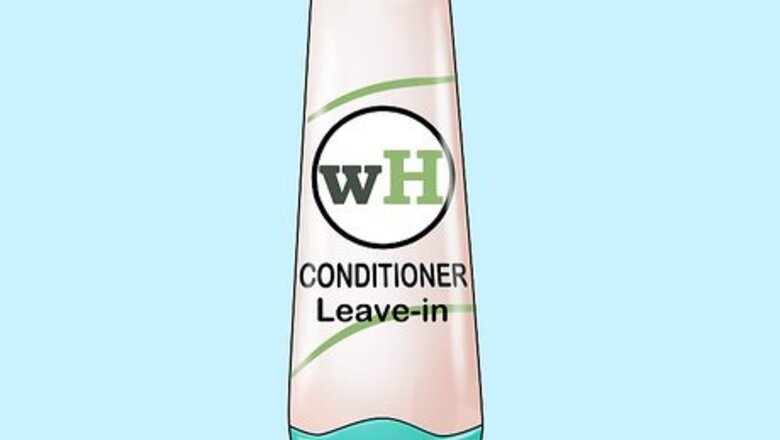
views
Making A Leave-In Moisturizer
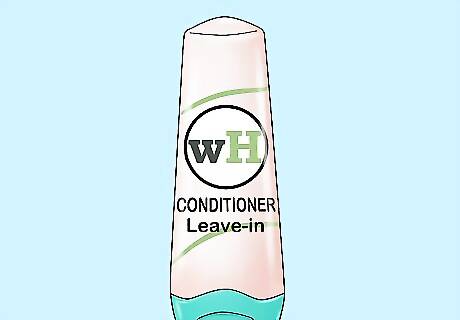
Choose a conditioner. Select a leave-in conditioner, which is more lightweight than a rinse-out conditioner. The goal of conditioner is to add moisture to your hair, make it smoother, and can make your hair look healthier. Find a conditioner that matches your hair needs (dry, color-treated, curly, etc). If you have synthetic braids, choose a conditioner with a protein in it. This can strengthen your natural hair.
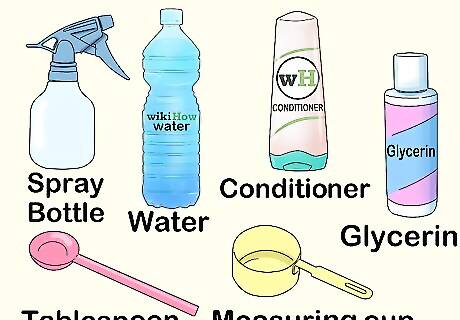
Gather your moisturizer supplies. You can quickly mix up a lightweight moisturizer using ingredients that you probably already have on hand. Use whatever conditioner you usually use on your hair. This mixture will be easy to spray onto your hair every day. You'll need: A spray bottle A measuring spoon A measuring cup Conditioner Water Glycerin

Add conditioner and water to the bottle. Measure ⁄2 cup (120 ml) of conditioner into the spray bottle. Add 3 tablespoons (44 ml) of water and screw the nozzle onto the top. Shake this mixture till the water is completely combined with the moisturizer. The water helps thin the conditioner out so that you can easily spray it onto your braids. If it's too thick to spray through the nozzle, gradually add more water until it reaches the desired consistency.
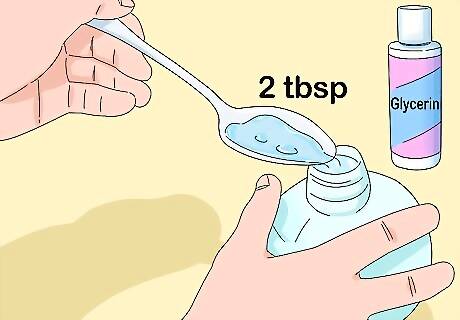
Add glycerin. Unscrew the spray bottle nozzle and add 2 tablespoons (30 ml) of 100% pure glycerin to the diluted conditioner. Screw the bottle nozzle back into place and shake the mixture till the glycerin is mixed in. Glycerin is added to reduce frizz in your hair and keep it moisturized.
Applying a Leave-In Moisturizer

Spray the braids near your face with the homemade moisturizer. Bring the braids from the back of your head to the sides of your face. Use the spray bottle filled with leave-in conditioner, water, and glycerin, and spray the braids nearest to your face. You should mainly be spraying close to your scalp if you have synthetic braids. If you have natural braids, you'll eventually need to spray the entire braid.
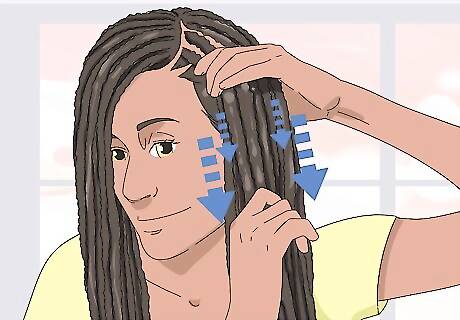
Rub the moisturizer into your braids. Grab a handful of braids near your scalp using one hand. While loosely gripping the braids, run your hand down the entire length. At the same time, use your other hand to alternate running the moisturizer down the braids. Run your hands through the braids till you can't see the moisturizer anymore. Never rub the moisturizer up through your braids or you'll create frizz and can damage your hair.
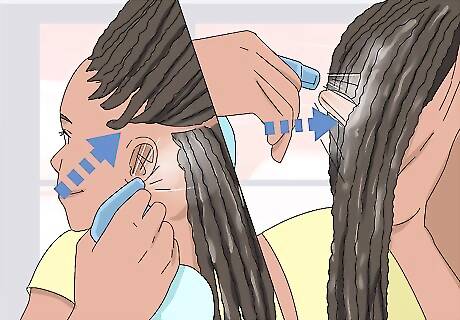
Spray the middle and ends of your braids. Once you've sprayed near the scalp and top of your braids, spray near the middle of your braids. Run your hands down the length of the braids so that the ends of the braids are completely moisturized. It's especially important to spray the ends of your braids if your braids are natural. Your hair is more likely to split or frizz if it's not moisturized.
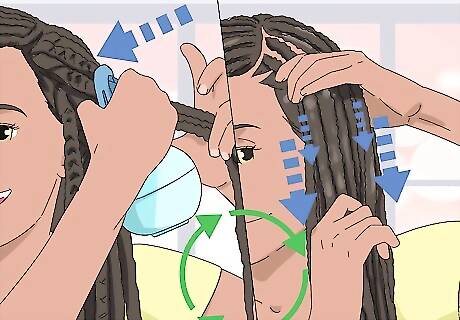
Moisturize the rest of your braids. Working in chunks, continue to spray and rub down your braids with moisturizer. Remember to get the hard-to-reach braids at the back of your head. Make sure your edges are well-moisturized since these can easily dry out. Moisturizing your edges will make the braids last longer.

Seal your braids. Squirt a natural oil (like coconut or almond oil) into the palm of your hand. Rub your hands together and loosely grab a section of braids near your scalp. While loosely gripping the braids, run your hand down the entire length. At the same time, use your other hand to alternate running the moisturizer down the braids. Continue to add more oil and work through all of your braids. You shouldn't see any frizz once you've sealed the braids. Moisturize and seal your braids at least once or twice a week.
Deep-Conditioning Your Braids
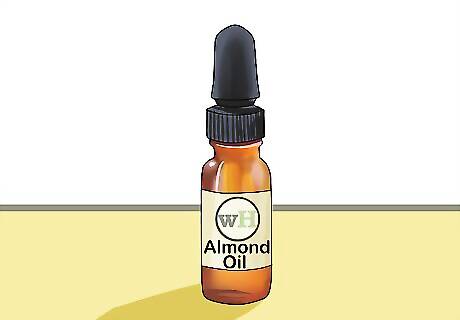
Choose a deep conditioner. Look for conditioner containing a light oil like coconut, jojoba, castor, or almond oil. Select an oil that hasn't been mixed with cheaper oils (like mineral oil). A lighter oil can be easily absorbed by your scalp and your hair. Avoid using a thick or heavy conditioner that will just sit on your hair. Repeated use of a thick conditioner will cause product buildup on your braids.

Apply the conditioner. Keep the oil in a squeeze bottle so you can easily squeeze the oil directly onto your scalp. This way, you can easily massage the oil into your scalp and your edges. If you're worried that you'll squirt too much oil onto your braids, you can always squeeze a small amount into the palm of your hand, rub your hands together, and massage the oil onto your scalp. Or, purchase a bottle with a dropper so you have control over the amount of oil you apply. Remember to rub oil onto the tips of your braids too.
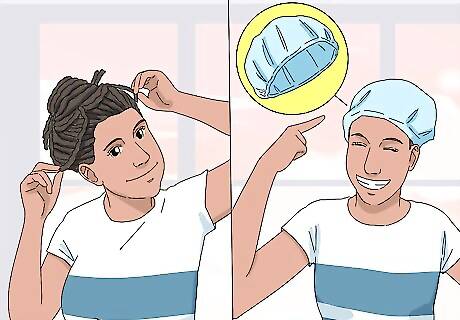
Wrap your braids. Put your braids into a protective hairstyle. You can twist your braids into a bun and secure them to the top of your head. If your braids are short, try to tie them back or to the sides of your head. Place a plastic cap completely over your scalp so that your braids are contained. If you don't have a plastic cap, you can also try securing your braids with plastic wrap. This trick will probably work better if your braids are shorter.

Let the conditioner dry. Sit under a dryer for about 20 minutes to allow your hair to soak up the oil more effectively. Let the braids air dry for another 10 minutes. To let the oil absorb even more, you can leave your hair in the cap for up to an hour after applying the heat. Avoid heating your hair for more than 30 minutes, since your hair will stop absorbing oil after this point.
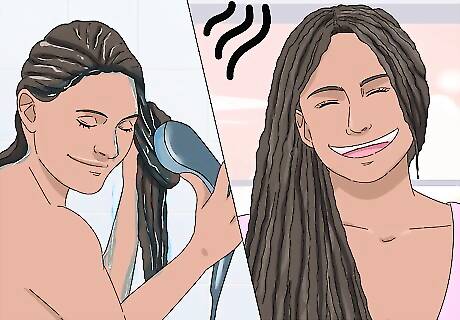
Rinse out the conditioner and let your braids dry. Take the cap off and let your braids down. Lightly spray your braids and scalp with your daily leave-in conditioner. This will seal in the moisture from your deep conditioning treatment. Rinse your braids and your scalp with clean water. Let your braids completely air dry. Note that wetting your braids will make them heavier, especially if you have long hair or extensions. It's okay to leave a little conditioner in your hair after rinsing. This will just give your braids a little extra moisture.
Repeat the treatment every week. In order to keep your hair and braids looking great, do a deep-conditioning treatment once a week. If your hair starts to look greasy, you can cut back to once every other week.
















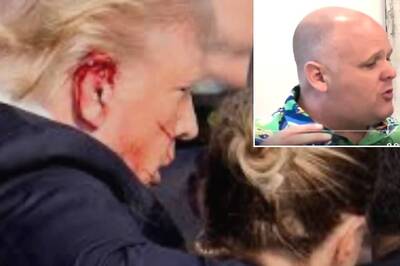



Comments
0 comment